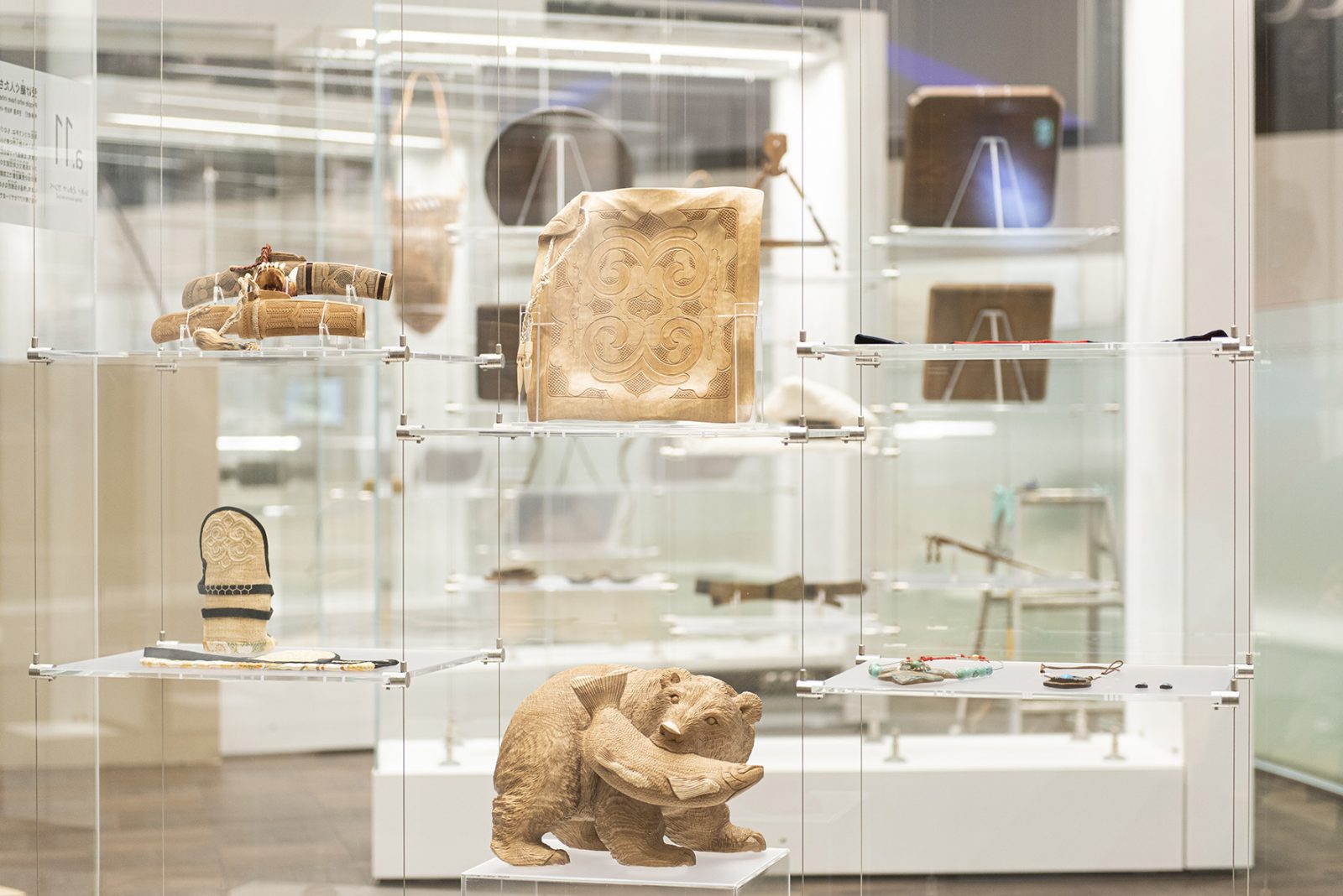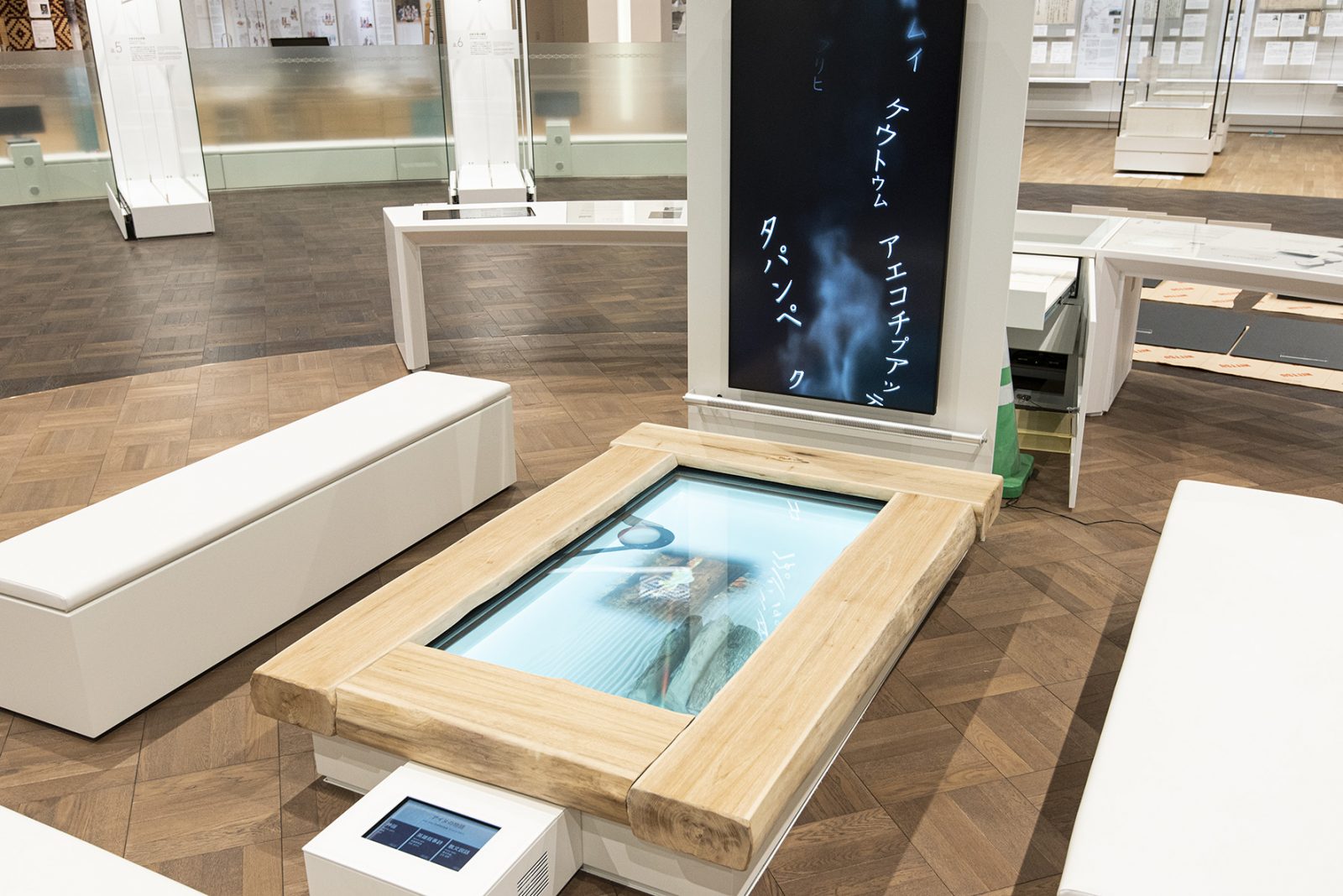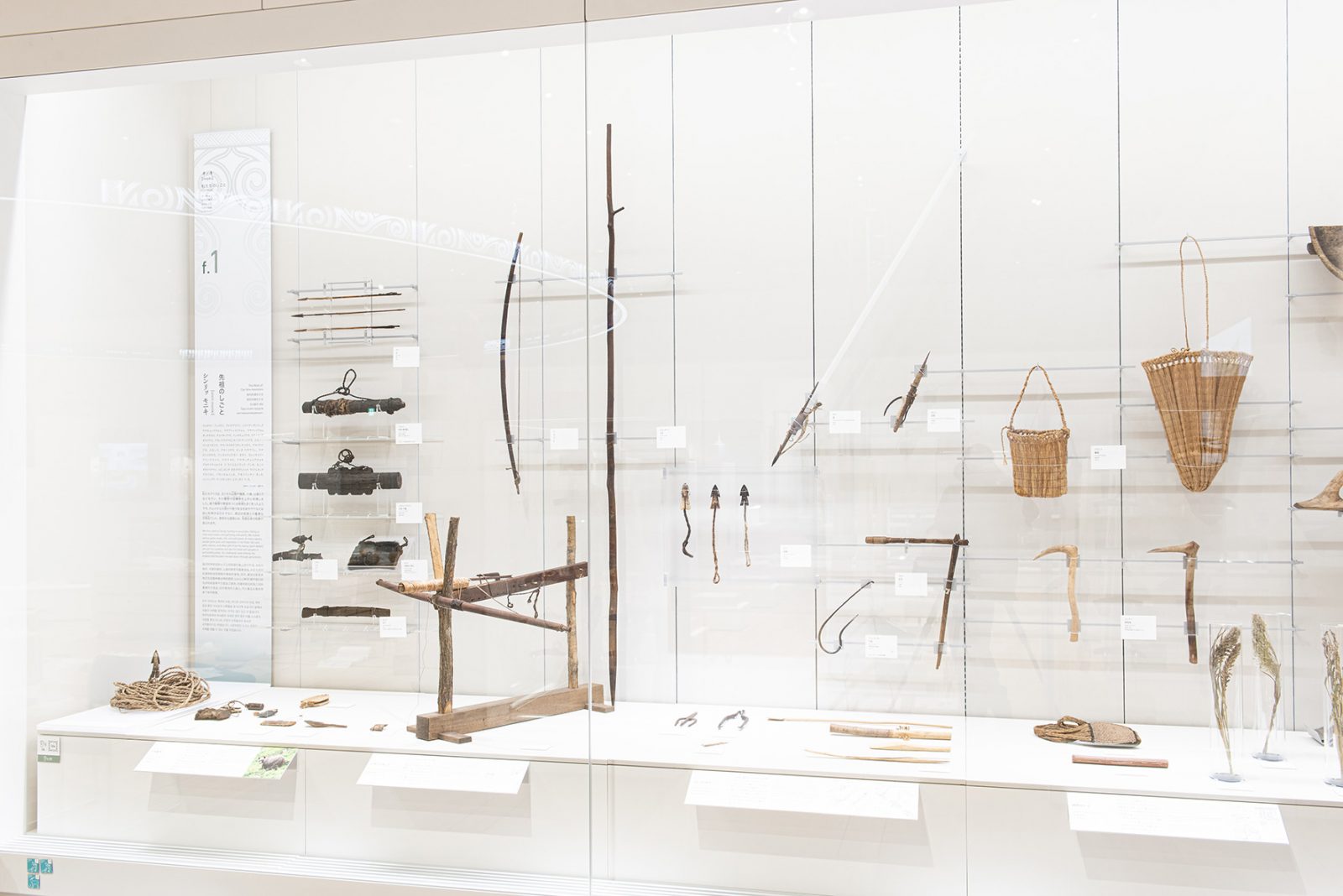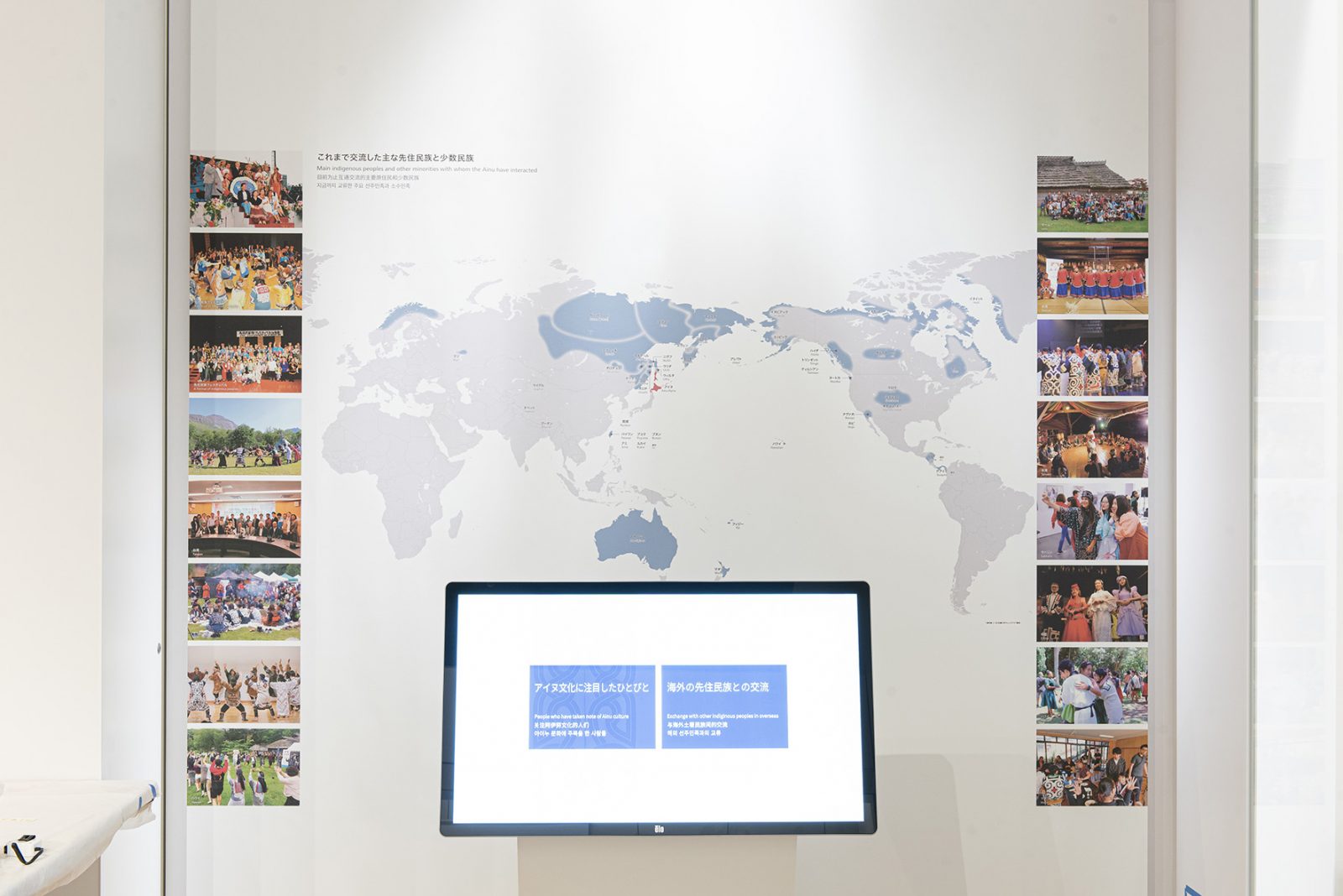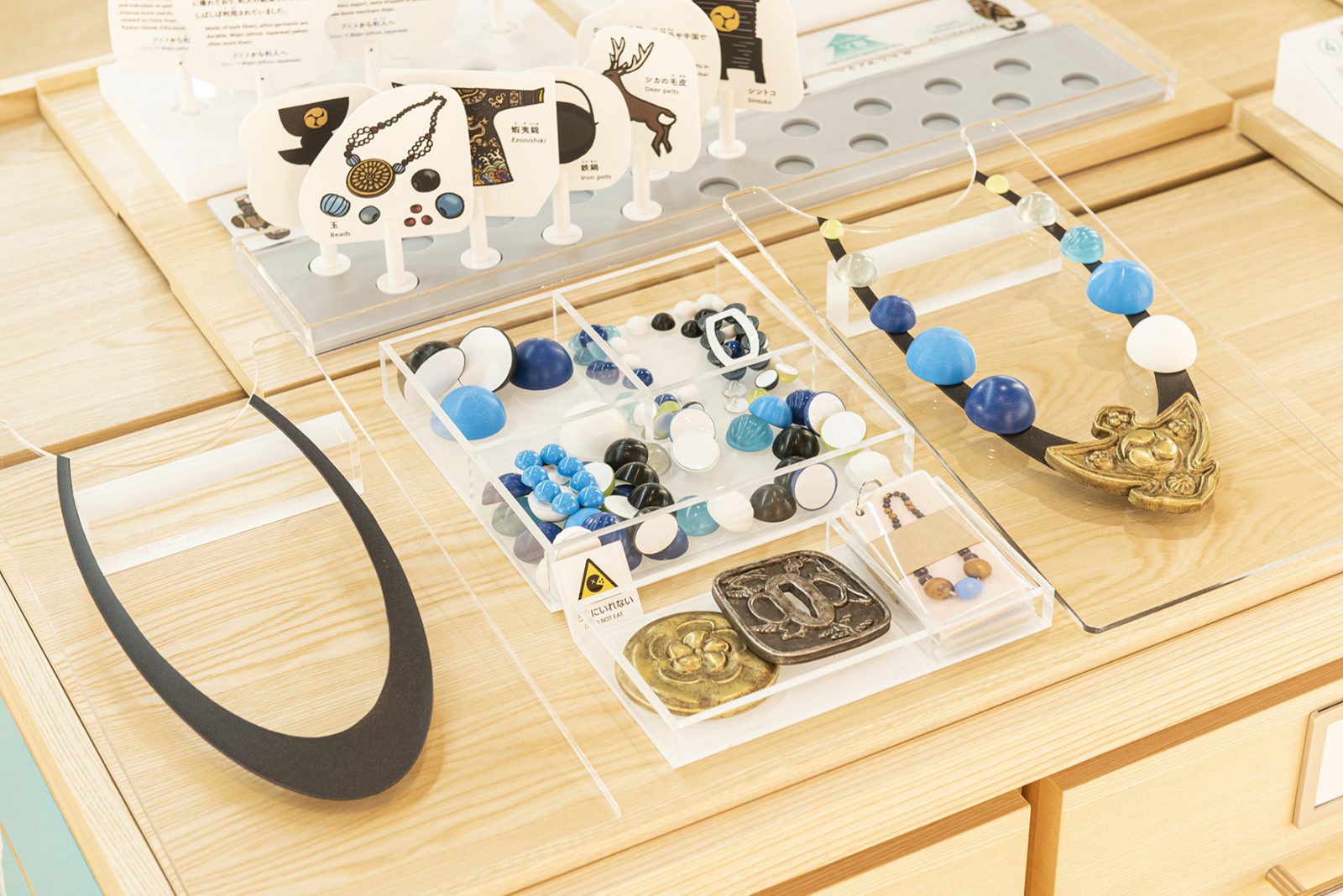Exhibition
2F Museum Facilities

Ikor tumpu
Permanent Exhibition Room (2F)
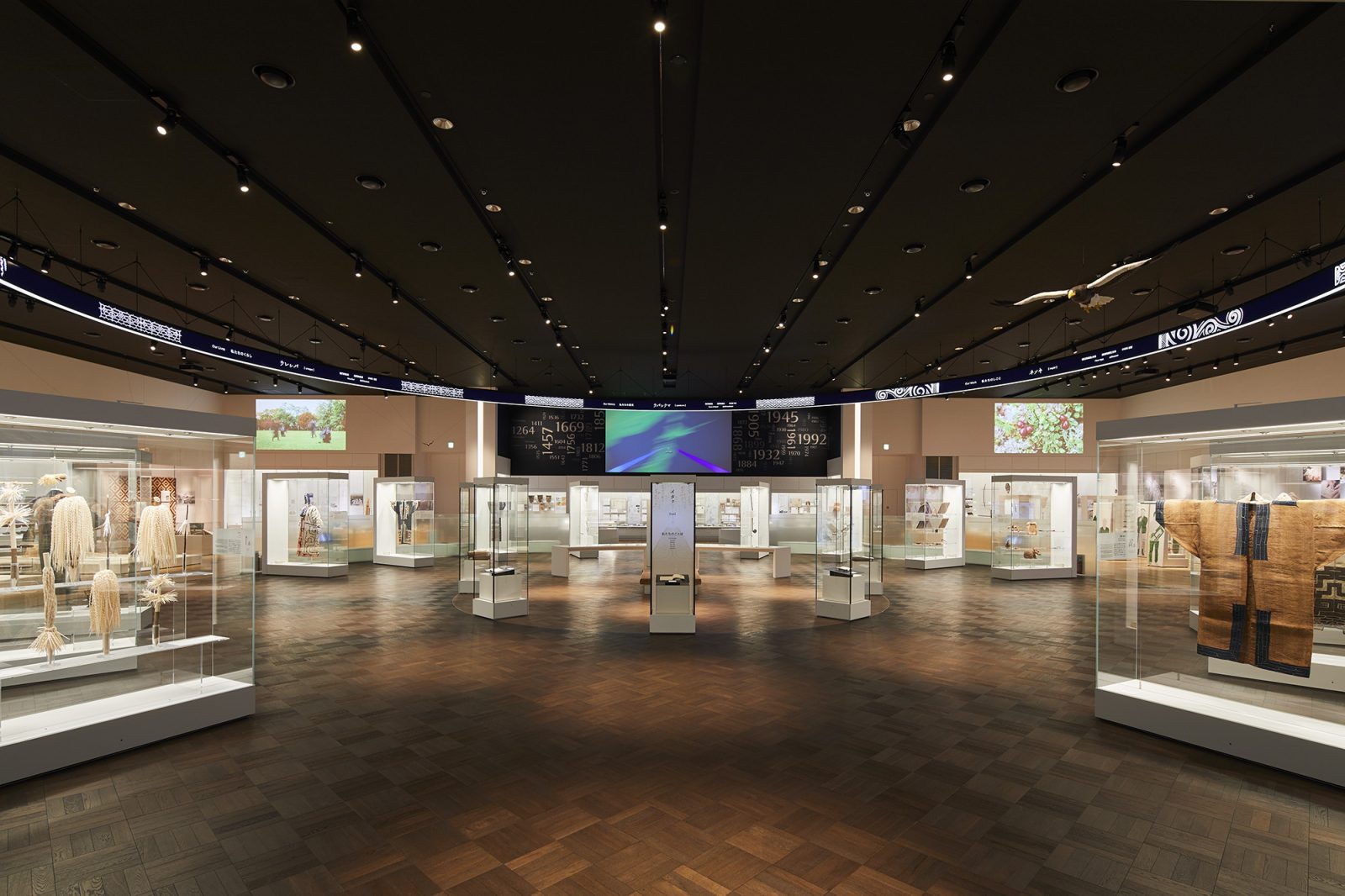
Six themes from the Ainu perspectives
The permanent exhibition introduces the Ainu language, history and culture from the perspectives of the Ainu. The Ainu are an indigenous people to Hokkaido, Sakhalin, Tohoku and the Kuril Islands, and the exhibition spans the history of humankind in the region from 30,000 years ago to the present day. Visitors can experience the Ainu language from a range of linguistic traditions based in different areas through writing on signs and panels and the audio guides available for rental. A smartphone application incorporating the audio guide is also scheduled for release.

iaskeuk
Introduction
After passing through the Observation Deck overlooking Lake Poroto, this exhibition introduces peoples from around the world, with the Ainu among them.

aekirusi
Plaza Exhibition
The plaza-style layout of the exhibition allows visitors to explore freely from the central area. A collection of outstanding works is displayed in the center of the permanent exhibition room to allow visitors to gain an immediate insight into Ainu culture and artistry. This gives visitors the freedom to delve deeper by heading to the themed exhibitions and gain a fuller understanding of the elements of interest to them.
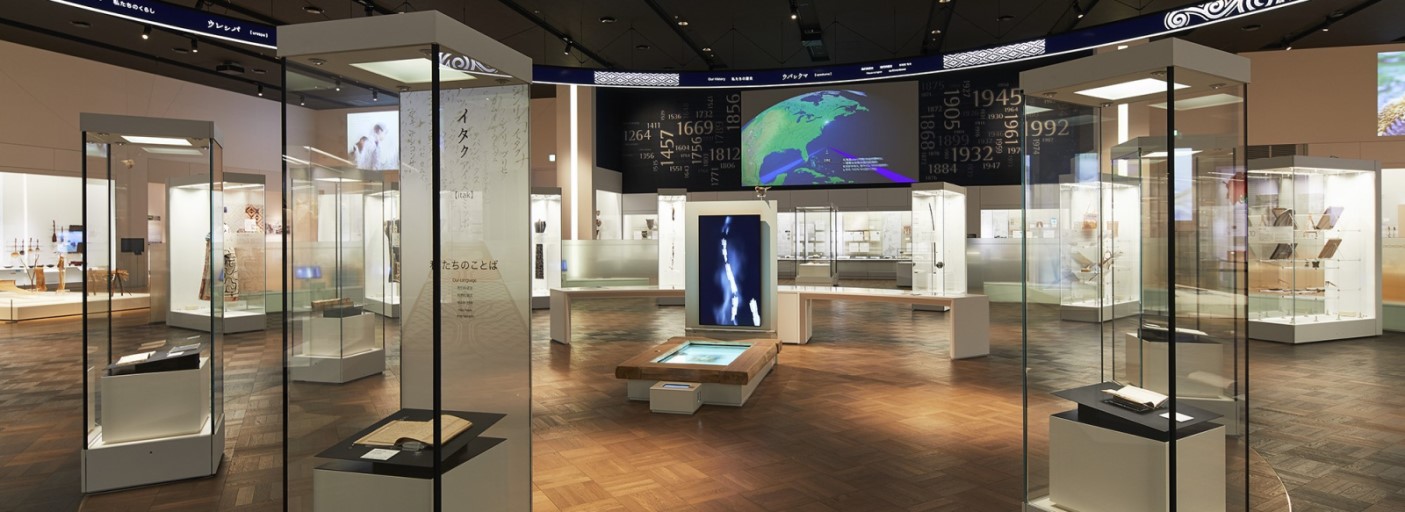
itak
Our Language
Learn about the Ainu language through stories, place names and current initiatives to promote its use. The exhibition gives visitors the opportunity to hear Ainu as if they were sitting around a hearth, play games to learn pronunciation and word order, and watch videos about place names and conversational Ainu.

inomi
Our Universe
Spirituality is a central aspect of Ainu culture. The exhibition includes graphics illustrating the Ainu belief that ramat (spirits) exist all around us. Various artefacts relating to a rage of Ainu rituals are also on display, such as a 6m-long wooden pole used to hold bears during the iyomante ritual from Sakhalin.

urespa
Our Lives
Discover the Ainu way of life through tools and videos relating to dress, cuisine, lodgings, music, dance and children’s games. The exhibit contains demonstrations of traditions that have been passed down through the generations, including making thread from bark stripped from Manchurian elm and an actual loom.

nepki
Our Work
Learn about the past and present work of the Ainu. The first half of the exhibition introduces tools and techniques used in hunting, fishing, farming and gathering and an area showing how these tasks change throughout the year. The second half covers work and crafts that have been around since the Meiji Era (1868-1912). Examples of tools and works help to illustrate the work that Ainu people engage in today.

ukoapkas
Our Exchange
See how the Ainu have engaged in exchanges with the peoples around them throughout history. The most striking part of the exhibition is the itaomacip (oceangoing boat) discovered at Lake Akkeshi that has been restored after being received from the Akkeshi Town collection.

ikere usi “tempatempa”
Interactive Station “tempatempa”
Tempatempa is an Ainu word meaning “Touch and feel them.” These interactive exhibits introduce children and adults to Ainu culture through 18 learning tools and kits based on six exhibition themes, including dioramas, models, tamasay (necklaces) and 3D puzzles of salmon and deer. They are designed to help deepen visitors understanding of the exhibits in the permanent exhibition and of Ainu culture.



